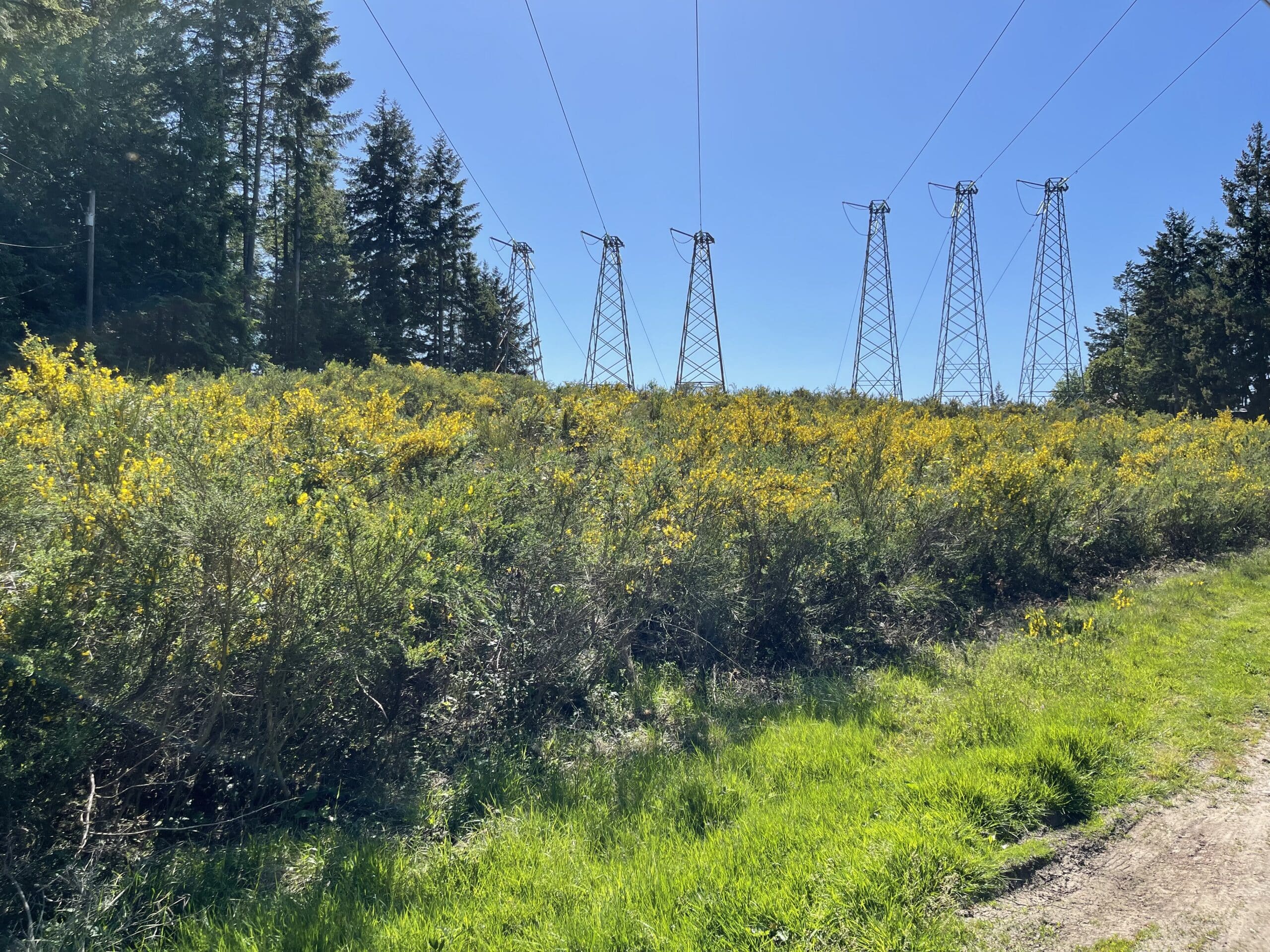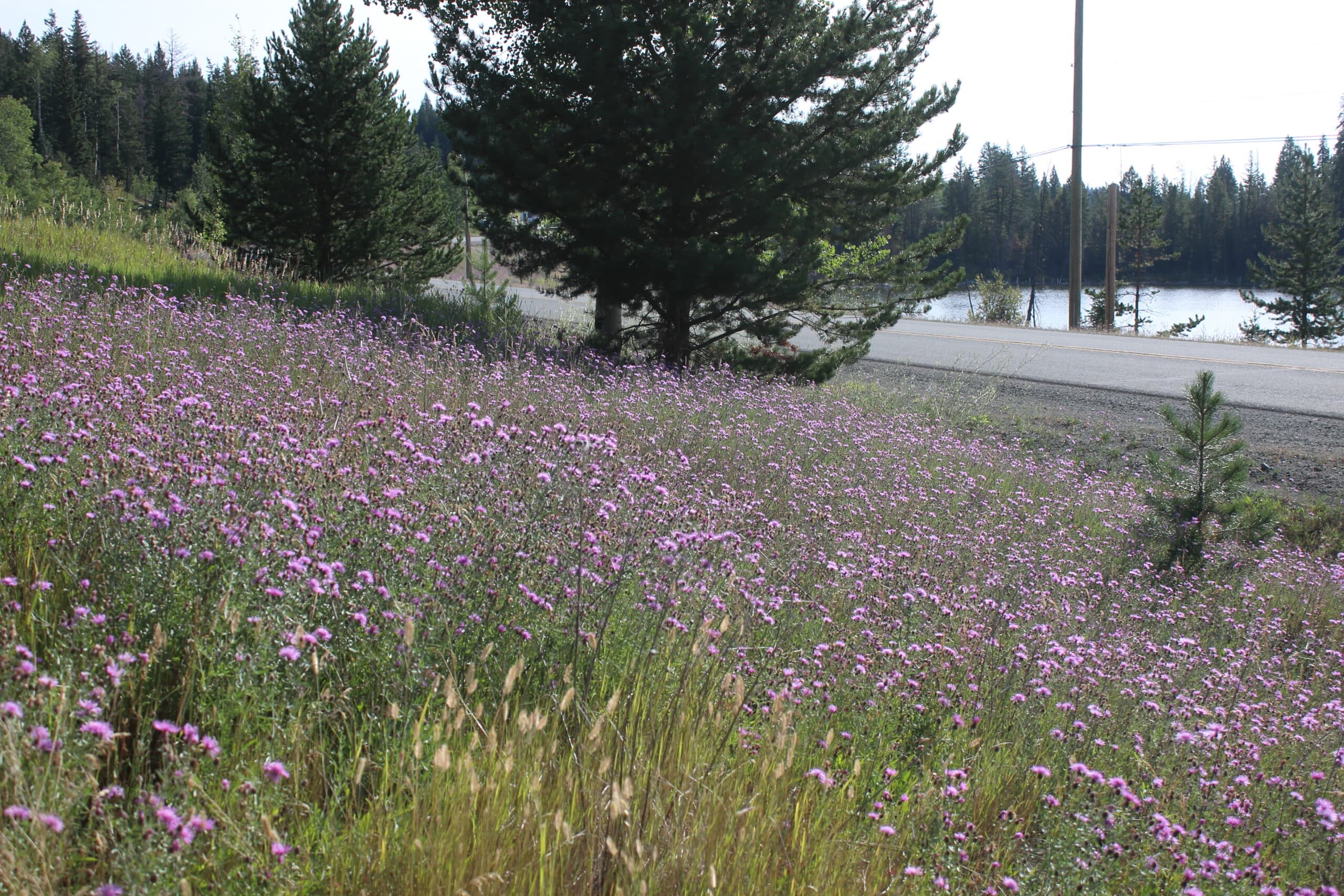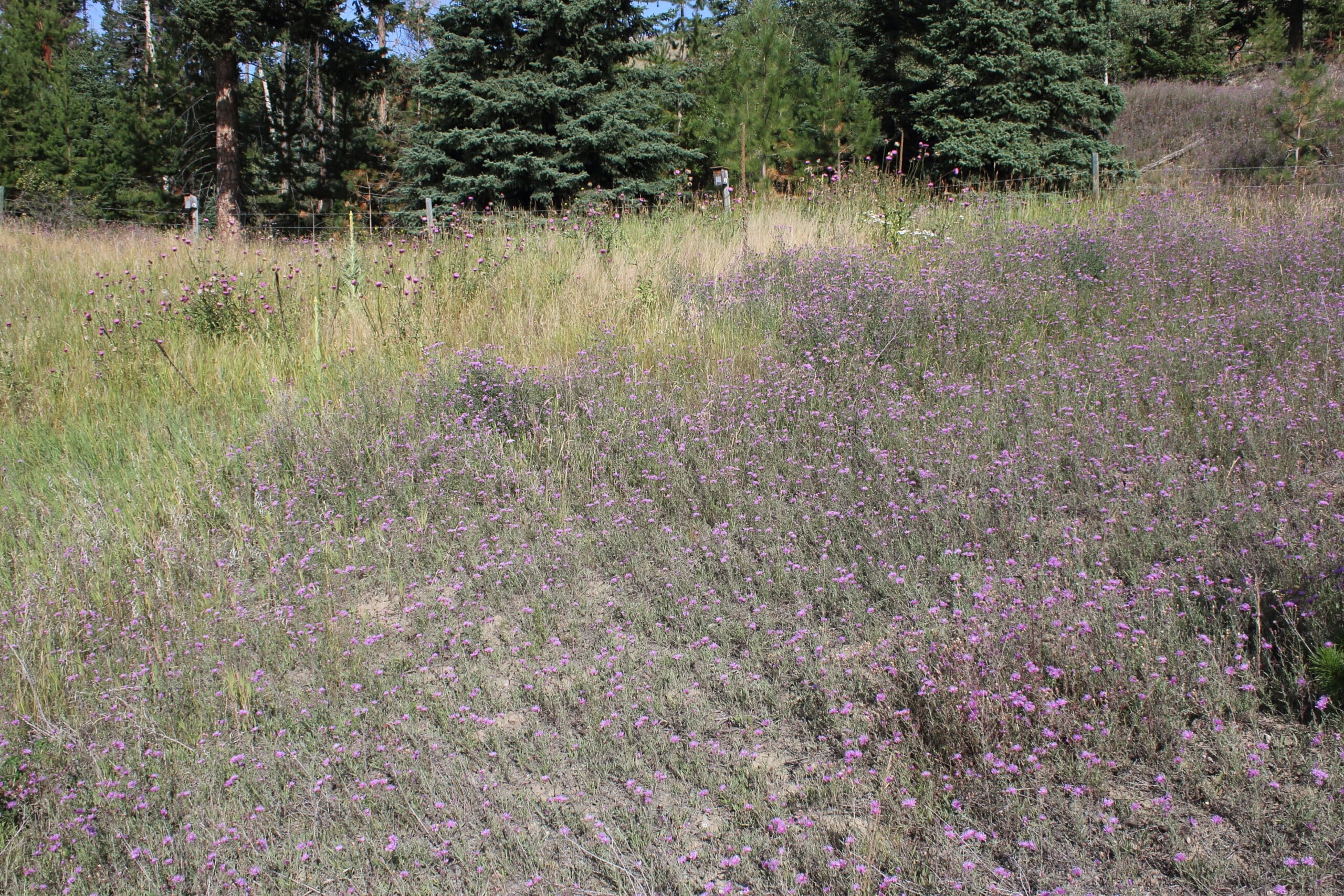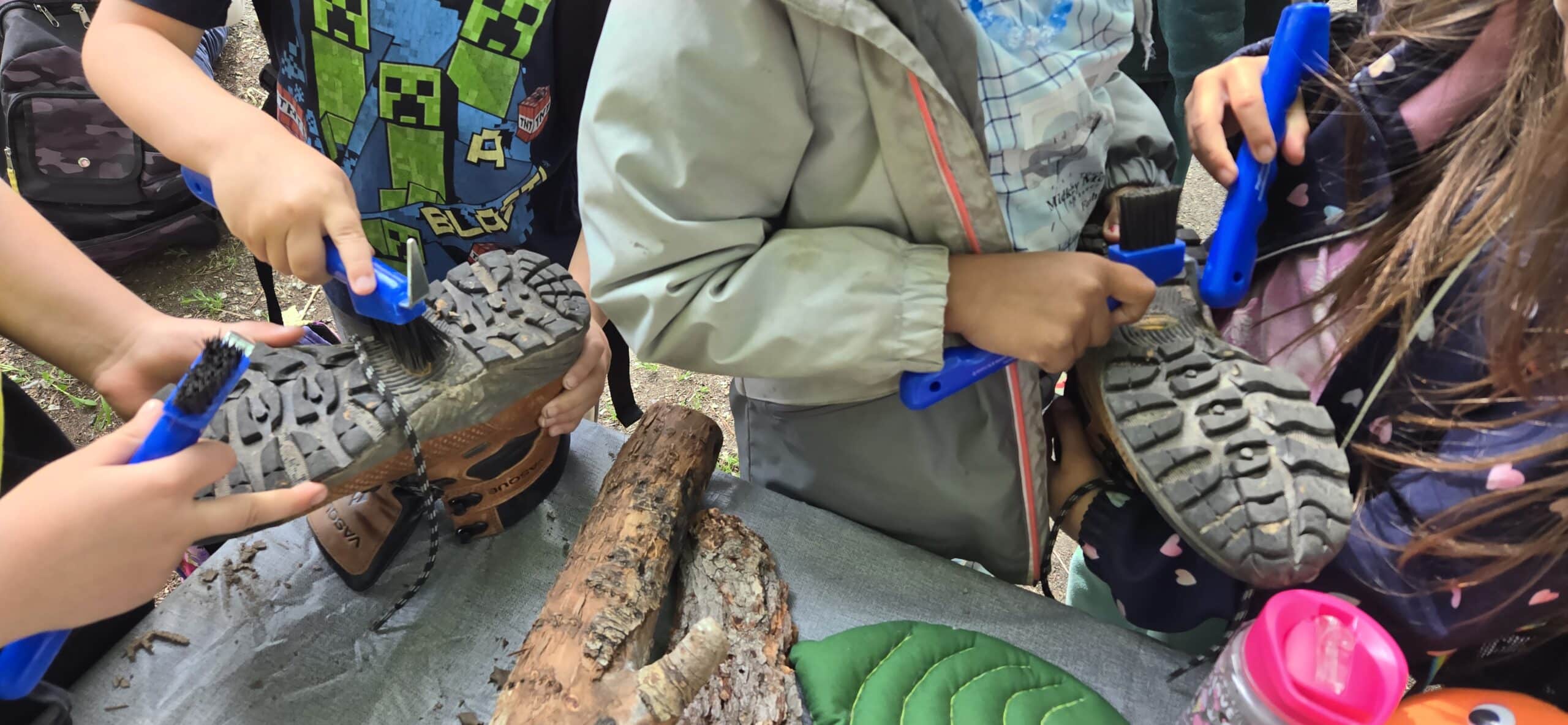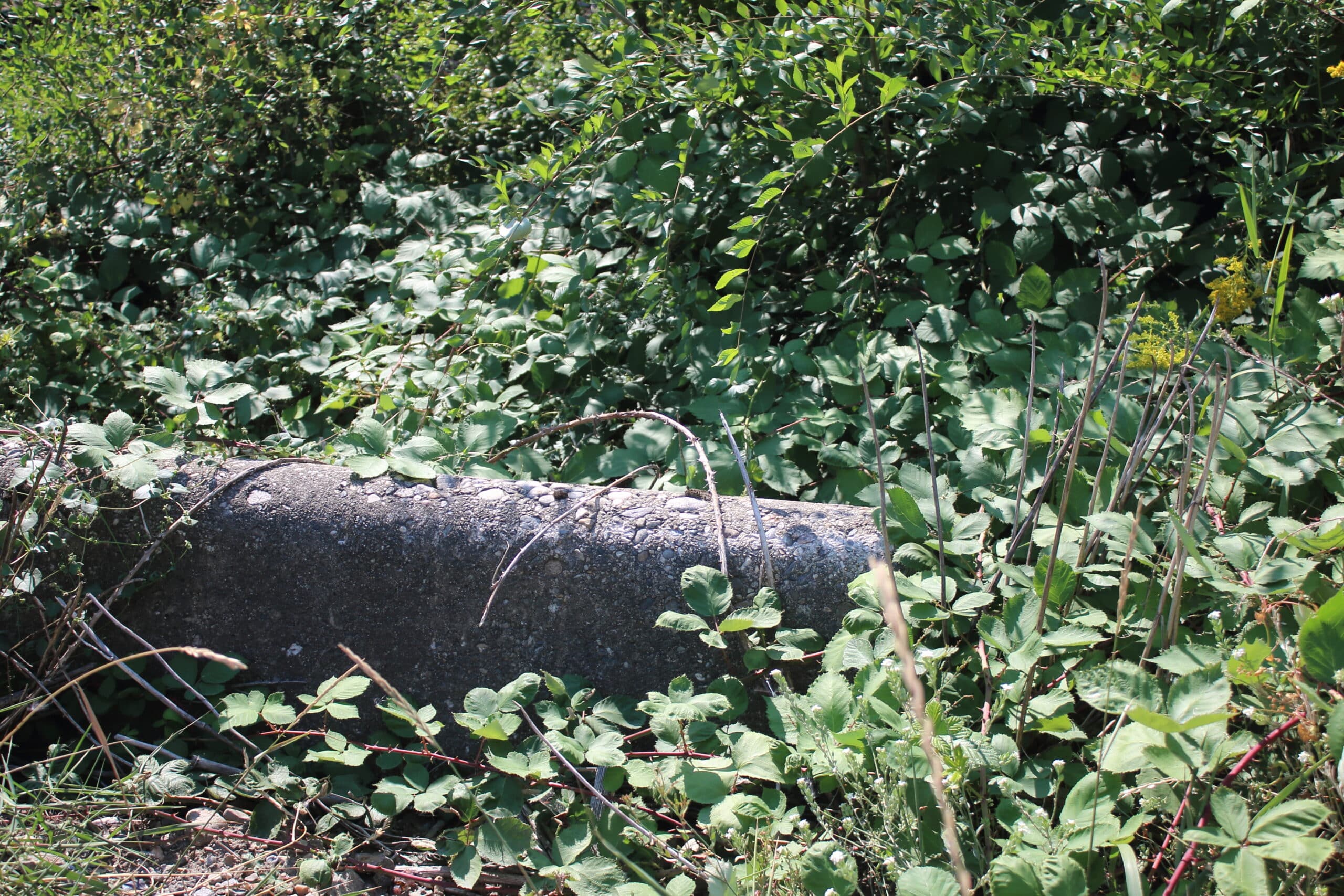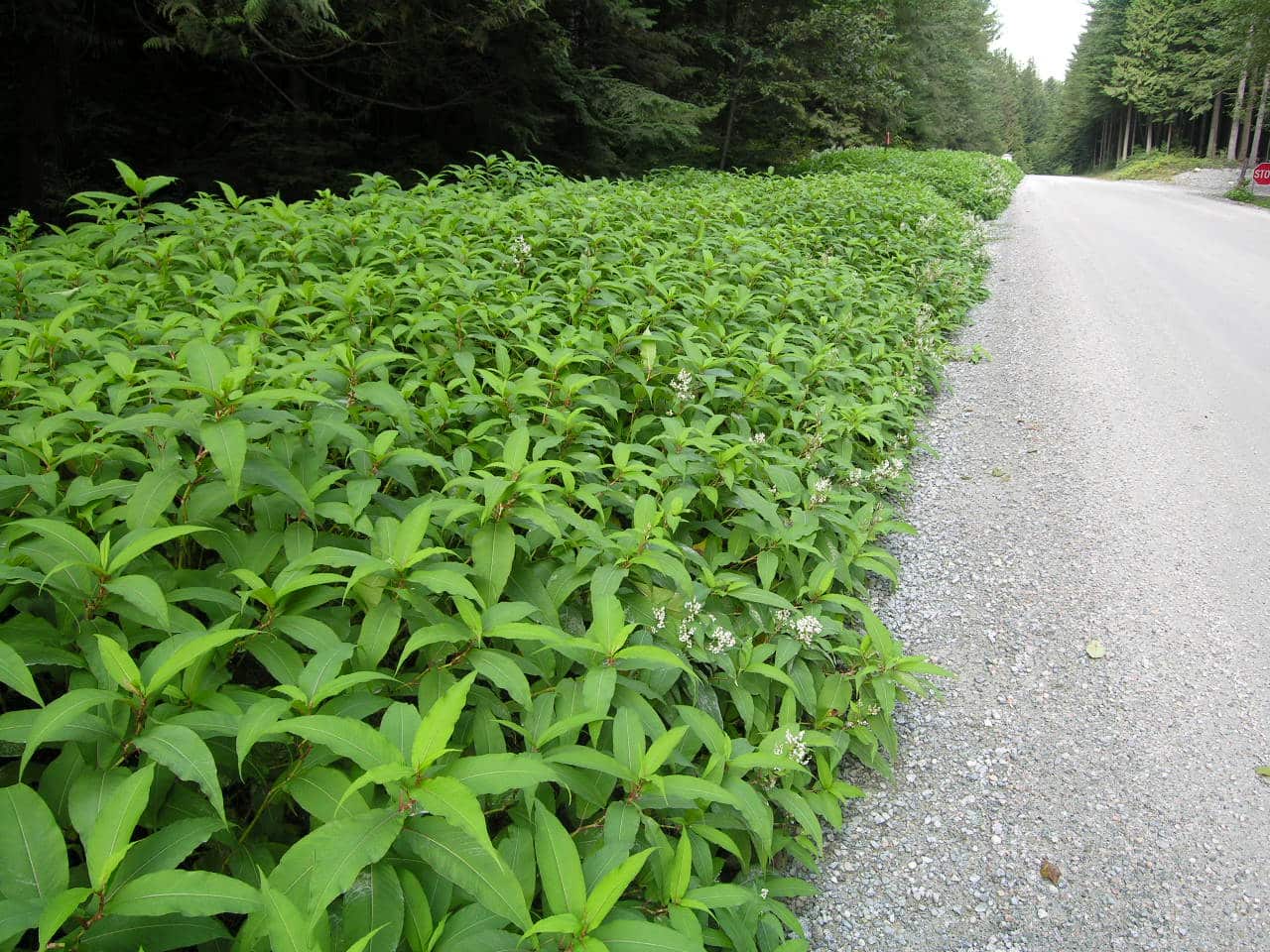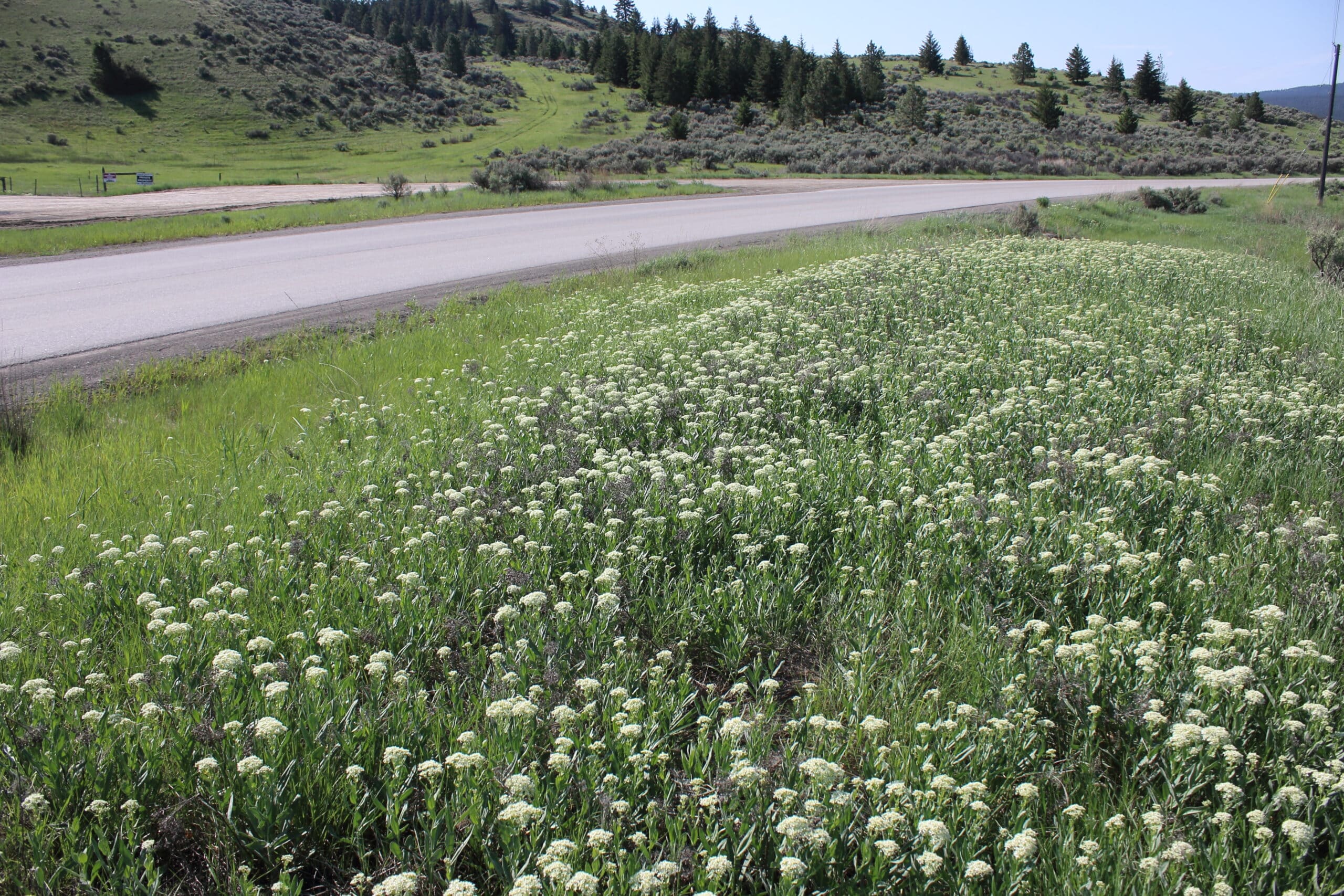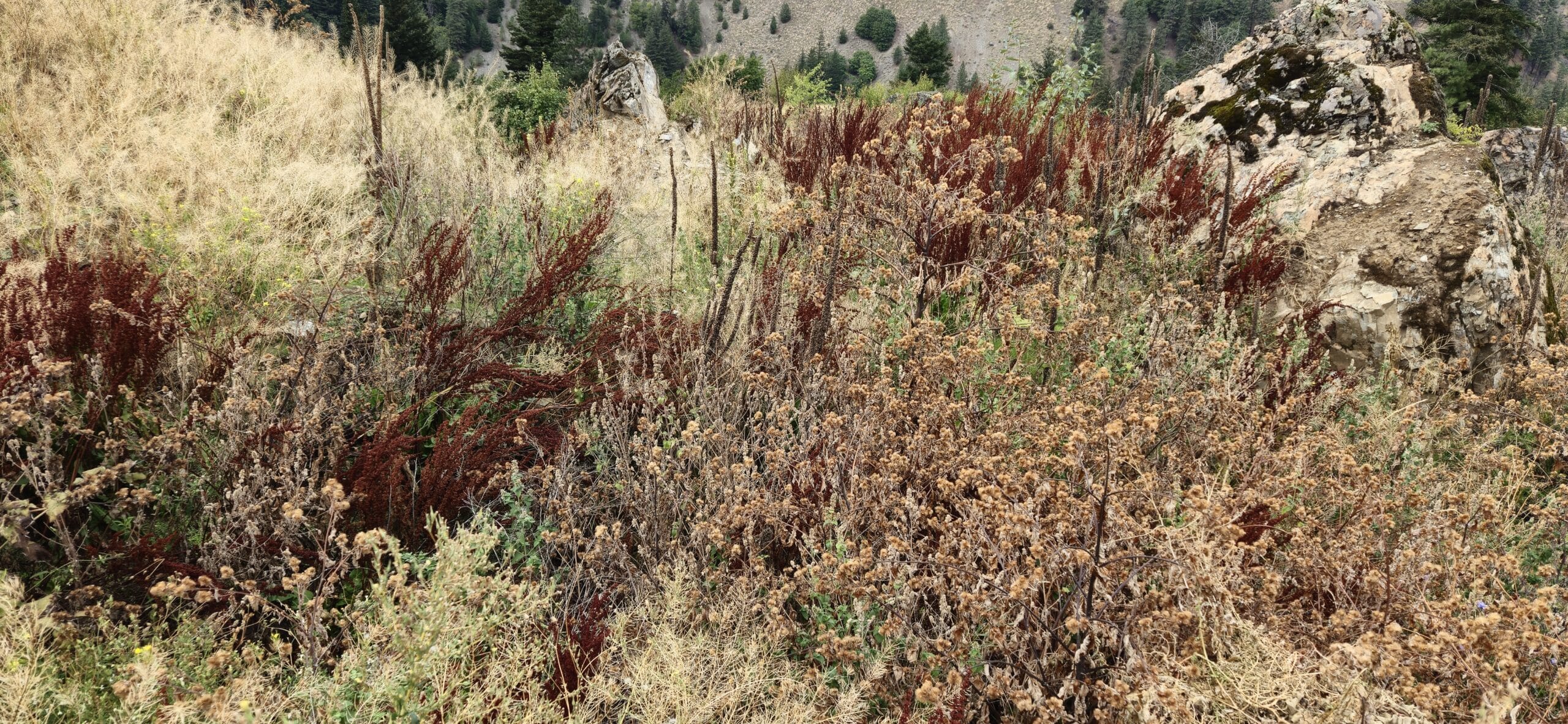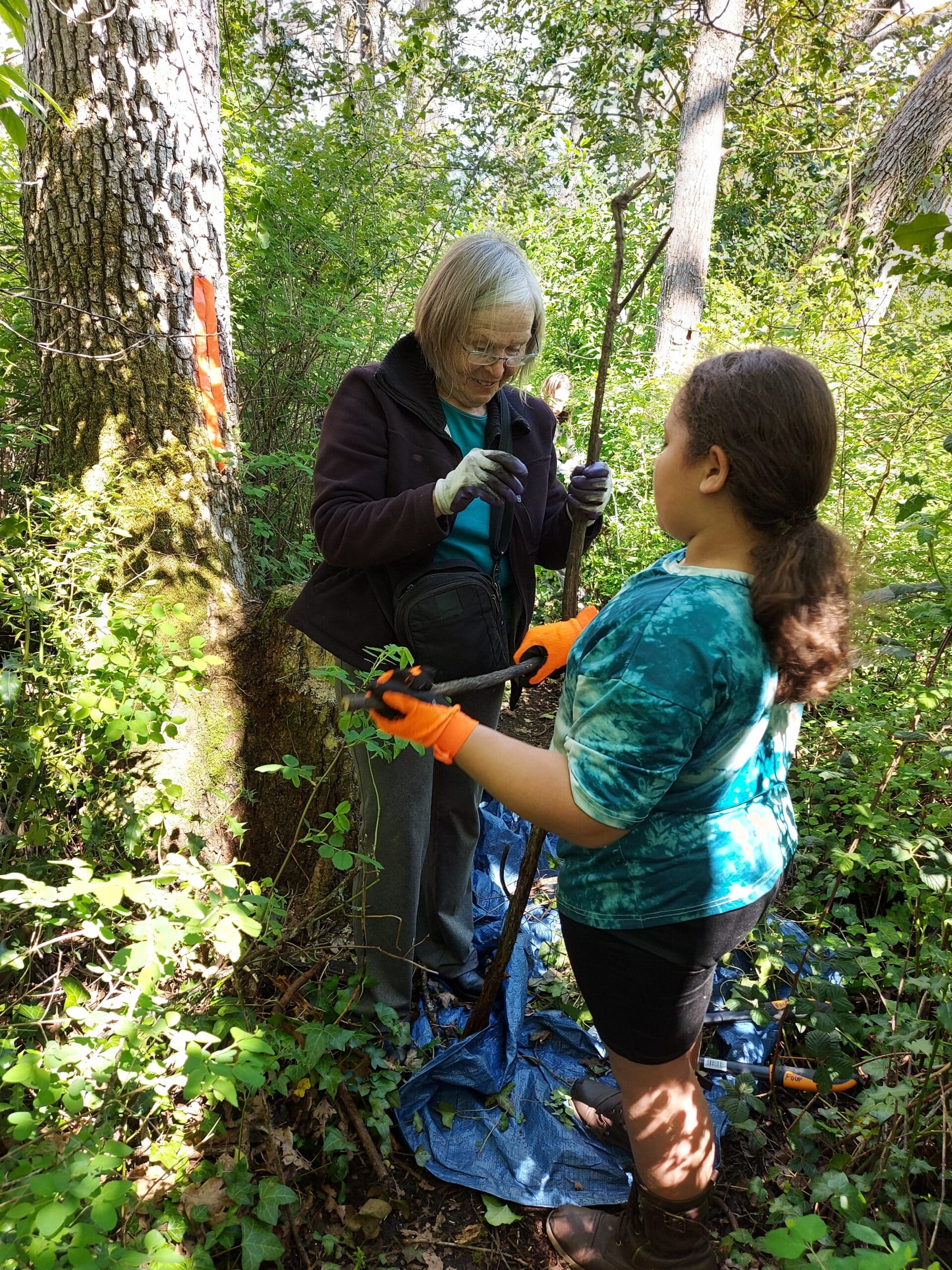Squeal On Pigs!
Canada has no native pigs, but escaped domestic pigs, wild boars, pot-bellied pigs, and their hybrids have become a serious issue. Introduced from Europe, Asia, and North Africa for farming, hunting, and as pets, they have adapted and multiplied. Today, invasive pigs are Canada’s most destructive large mammal.
Where Are They?
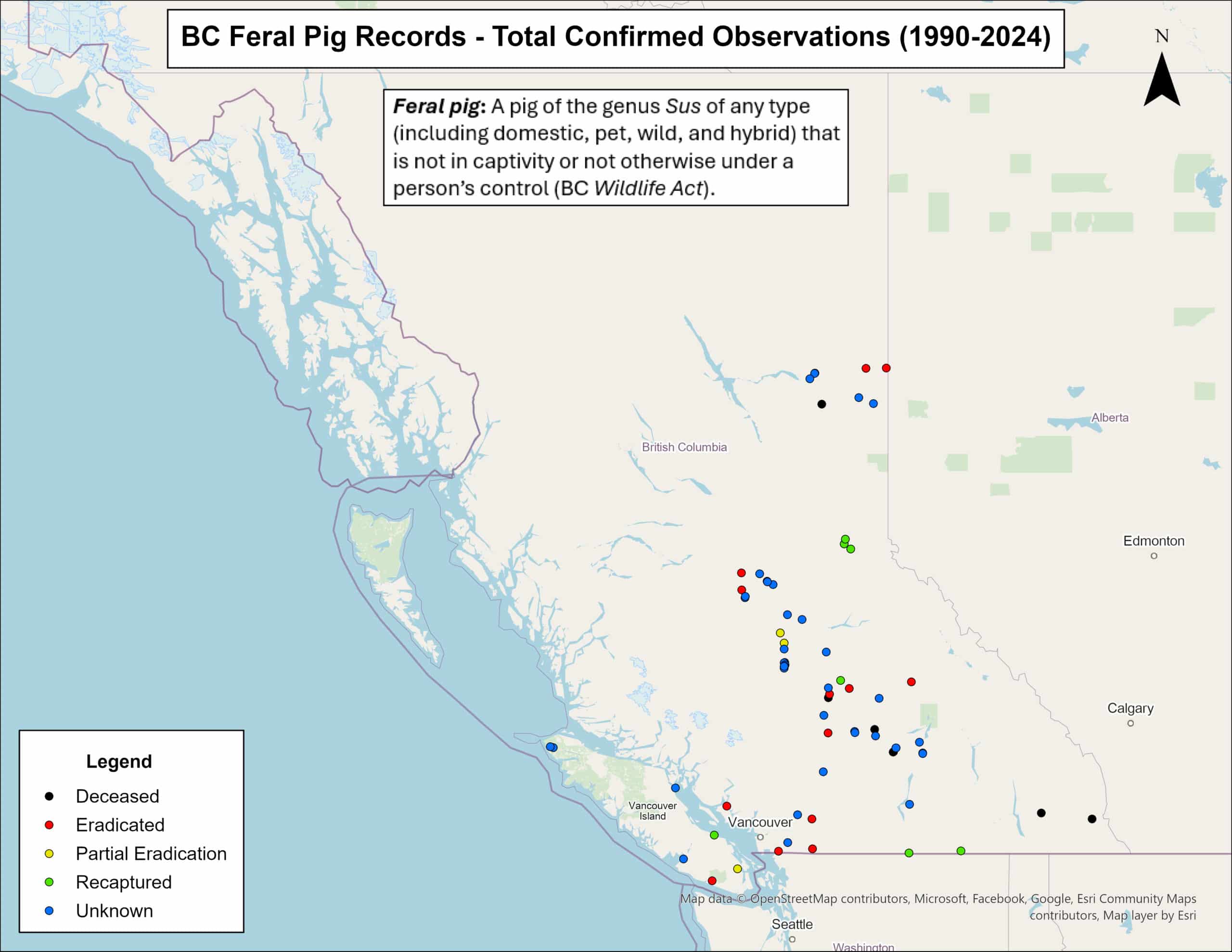
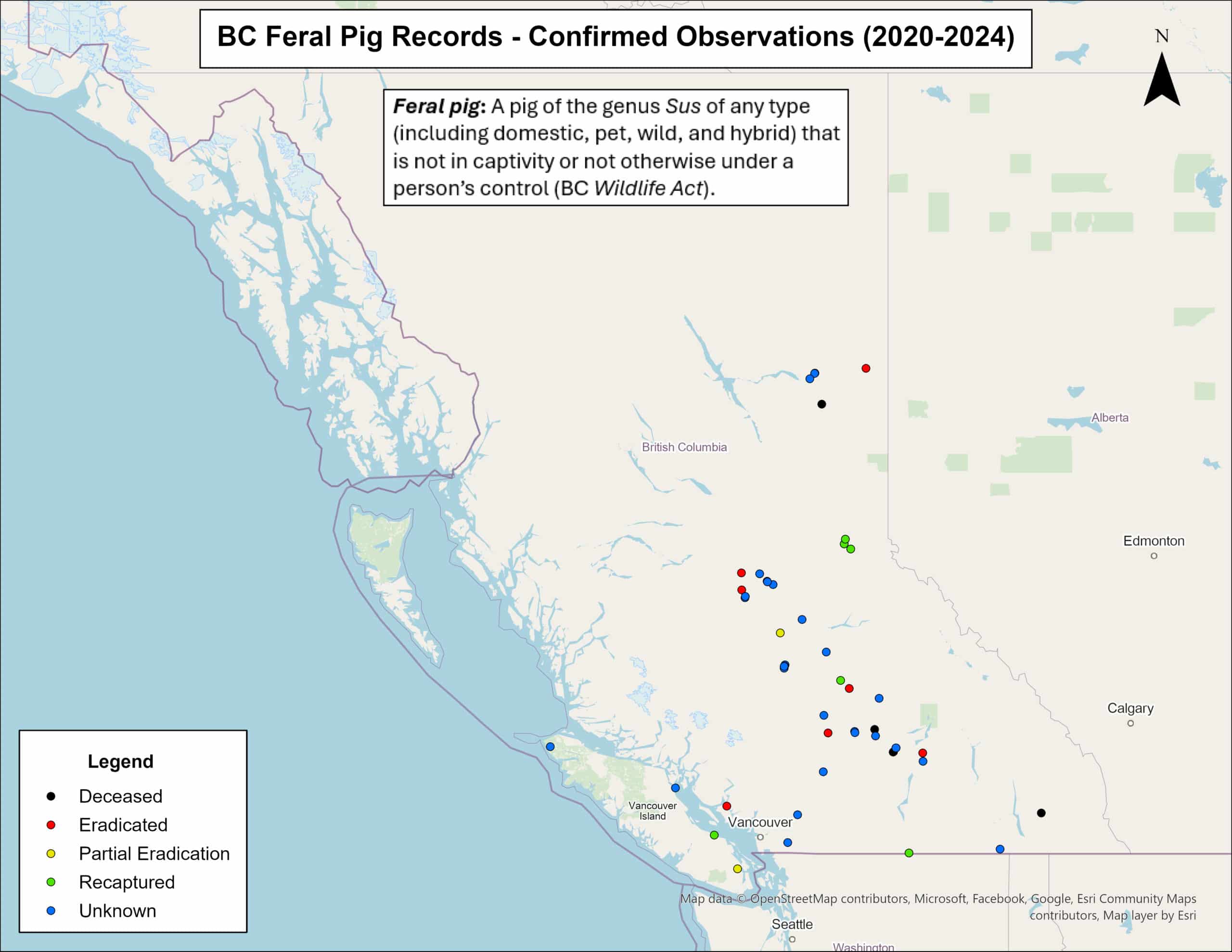
Invasive pigs are not known to be established in B.C., but uncontained pigs have been reported. This map shows confirmed observations recorded by the Ministry of Water, Land and Resource Stewardship. A confirmed observation includes a photo or comes from a verified source. Records may involve pigs that were: Eradicated or recapture, found deceased, from an unknown source, part of ongoing investigations.
*Scroll the map to see how populations have changed over the years
DID YOU KNOW?
African swine fever (ASF) is a contagious viral disease that only affects pigs. ASF poses a serious risk to Canada’s swine industry and economy if introduced. ASF is currently NOT in Canada. Let’s keep it that way by staying vigilant, practicing biosecurity, and reporting any symptoms immediately to your veterinarian.
*For more information on pigs and ASF check B.C.’s Small Lot Pork Producer Management & Production Manual
African Swine Fever (ASF) Basics
1
Avoid importing pork products when traveling or declare them at the border
2
ASF is very resistant and can be carried on clothes, shoes, equipment, and vehicles
3
ASF can survive in pork products for months to years. Do not feed pigs any food waste or scraps
4
ASF only affects pigs; it is not contagious to humans or other animals
5
Dispose pork products in secure bins to avoid attracting wildlife or invasive pigs
6
ASF has not been reported in Canada and everyone has a role in keeping Canada ASF-free

Recognize the Signs
Early detection can help prevent costly damages and disease spread.
1
Look for Signs of Wallowing, Rooting, or Rubbing
ASF has not been reported in Canada and everyone has a role in keeping Canada ASF-free
Wallowing behavior reduce stress and allows pigs to bond socially
Canva, mrpluck, Getty Images
2
Look for Tracks, Tunnels or Scat in the Snow, or Mud
3
Invasive Pigs Come in Different Colours and Sizes
They can have 2 litters per year, with 10-12 piglets per litter
Credits: Canva, balwan, Getty Images
Escape Alert!
If one of your pigs escapes, follow these steps:
- Contain the situation: Guide the pig back to its enclosure with food or temporary barriers
- Secure fencing: Once contained, check and reinforce all fences and gates
*If human safety is at risk, call 1 877 952 RAPP (7277) or 911 for emergencies



Pigs are Nocturnal
Even if you do not see pigs they could still be around your property! One of the best tools for Early Detection and Rapid Response (EDRR) of invasive pigs is setting up camera monitoring networks.

Tips for Your Camera Traps

Resources
Across Canada: Cross border collaboration is essential for prevention
TO REPORT YOUR SIGHTINGS:
Use the form below to report your sightings.
Download Mobile Apps
Quickly and easily report sightings by using your phone.
iNaturalist
Report Invasives

FAQs
Invasive pigs are extremely smart and hunting can cause them to disperse and move into new areas, potentially expanding their territory. Besides avoiding areas with hunting activity, they also become more nocturnal or hide in inaccessible terrain putting pressure on other native species.
Effective control typically requires a combination of strategies, such as reporting, trapping, targeted removal, habitat management, and public education, alongside strict biosecurity measures to prevent further spread.
Invasive pigs in B.C. originated from escaped or intentionally released domestic pigs and imported wild boar, which then resulted in hybrids. These adaptable animals spread quickly, damaging ecosystems, threatening native species, and impacting agriculture. Efforts are ongoing across Canada to monitor and control their population.
Invasive pigs prefer habitats close to fresh water and can be found in forests, agricultural areas, shrublands and marshy swamplands. While B.C. does not yet have established populations of invasive pigs, their presence poses ecological and agricultural risks. Monitoring and reporting sightings are crucial to prevent their establishment and mitigate potential impacts. If you spot an invasive pig in B.C., it’s important to report them.
Report your sightings through our website or through mobile apps such as Report Invasives or iNaturalist. When reporting include as much information as possible including, location, physical characteristics, population size, and pictures (if able to take from a safe distance).
*For emergencies please dial 911 or 1-877-952-RAPP (7277).
Invasive pigs can harm humans and pets through aggressive attacks, especially when threatened or protecting their young. They also spread diseases like ASF, or contaminate water sources which can affect both humans and pets. Additionally, their environmental damage can create indirect hazards. To stay safe, avoid approaching them, keep pets leashed, and report sightings.
Funded in part by the Government of Canada under the African Swine Fever Industry Preparedness Program








